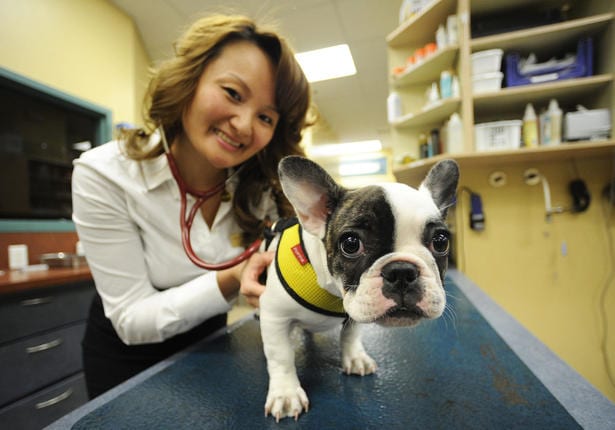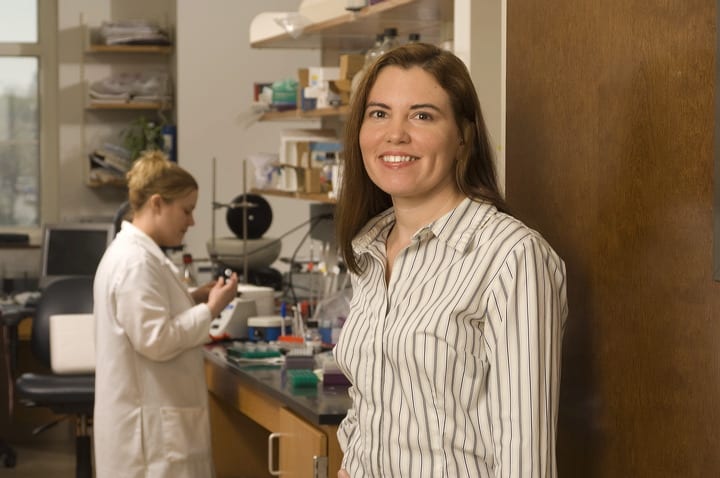A Nov. 27 article in the Toronto Star newspaper cites the research of SMU sociologist Anne E. Lincoln in which she explains the changing face of veterinary medicine.
An assistant professor in the Department of Sociology at SMU, Lincoln is an expert on how occupations transition from being either male- or female-dominated.
Toronto Star journalist Leslie Scrivener notes that Lincoln’s research has found that women now dominate the field of veterinary medicine — the result of a nearly 40-year trend that is likely to repeat itself in the fields of medicine and law. Lincoln found three factors that appear to be driving the change: the 1972 federal amendment that outlaws discrimination against female students; male applicants to graduate schools who may be deterred by a growing number of women enrolling; and the increasing number of women earning Bachelor’s degrees in numbers that far exceed those of male graduates, Lincoln says.
Excerpt:
By Leslie Scrivener
Toronto Star
At this time of year, as Elizabeth Lowenger scouts out new students for the venerable Ontario Veterinary College, she eyes candidates with good marks — usually the mid-80s.Among those high achievers she’s particularly interested in are those who for generations were the mainstay of veterinary medicine and now are rare as white horses — men.
She makes sure there are images of men on recruitment pamphlets and videos. When choosing students to speak on behalf of the college at high school career days, she ensures that men are included. “Everything I do has to have a male on it, but not exclusively,” says Lowenger, diversity and careers coordinator for the oldest veterinary college in Canada and the United States. “We have to make sure that they can say, ‘I can see myself there.’ ”
That might be a problem these days. Of the 114 students who entered the Doctor of Veterinary Medicine program at the Guelph campus this fall, 87 per cent are women. The dean is also a woman, while the faculty is about 60 per cent male.
The feminization of veterinary medicine, as researchers call it, is not lost on practitioners. “It’s gotten so it’s like the last of the Mohicans out there,” says one woman veterinarian. “You occasionally work with a male.”
The gender disparity has evolved over decades.
Dr. John Reeve-Newson still remembers how an assistant dean targeted the handful of women students in a discouraging “welcome” address at the college in 1960.
It went something like: “Ladies, I don’t think you should be here and I will do everything in my power to see that you don’t stay.”
How did he intend to achieve that, one might wonder.
“Ride their ass,” recalls Reeve-Newson, a Toronto veterinarian with a Mutual Street practice.
By 1971, when Dr. Jiggs Gough of Mount Brydges, Ont., graduated from the college, she was one of eight women. “They were aghast,” she says of the administration. “They thought the place was going to the rats.”
Things at veterinary schools have shifted dramatically in 40 years, and those changes reflect shifts in society at large. Lowenger says statistics show fewer men are going to university — more than 60 per cent of university graduates are women. Men still want to go to vet school, she contends, but fewer of them are studying science, and women are outperforming them.
More women than men are graduating in other professions. Sixty per cent of the youngest lawyers in Ontario are women, and nearly 60 per cent of the 2010 graduates from the University of Toronto’s Faculty of Medicine are women.
Men tend to avoid professions that are dominated by women, argues Anne Lincoln, a professor of sociology at Southern Methodist University, adding that veterinary medicine was once the most male-dominated profession in the U.S. Until 1972, she reports, Cornell University capped women’s enrolment in veterinary medicine at two per year.
“There’s something about the presence of women (in the classroom) that serves as a deterrent,” she says in a phone interview. Her research, reported in the July issue of the journal Social Forces, notes that for every one per cent increase in women in veterinary college, about 1.7 fewer men apply the following year.
 A Nov. 27 article in the
A Nov. 27 article in the 







